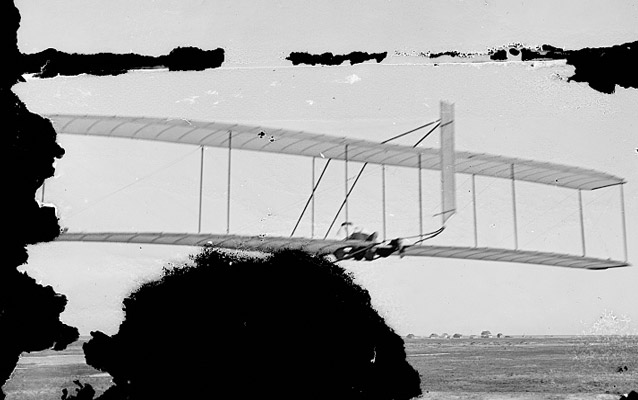Last updated: June 24, 2025
Place
Kitty Hawk

Wilbur and Orville Wright
In 1900, the Wrights began researching locations from which to begin their flying experiments. Kitty Hawk, North Carolina, a tiny coastal fishing village of approximately 300 people at the turn of the century, would come to suit their needs.
The Wrights desired a number of conditions in order to successfully experiment with controlled flight. First, they needed steady winds. Second, they needed an area with high sand dunes from which to glide. Third, they needed limited obstructions (trees, buildings, etc.) and, lastly, they needed isolation to experiment unencumbered.
Kitty Hawk’s average wind speed is 15 to 20 mph, ideal for the Wrights’ experiments. In 1900, the area was primarily sand flats and sand dunes, with only a smattering of man-made structures (the US Lifesaving Station, a weather station and post office, and a small amount of private homes), making the area ideal for the isolation they desired. In addition, the Kill Devil Hills, located four miles south of town, provided massive dunes from which to glide, and an abundance of sand to act as a cushion for crash landings.
Wilbur arrived by small fishing schooner at Kitty Hawk on September 13th, 1900; Orville eleven days later. Just three days prior to arriving, Wilbur wrote his father Milton to explain his reasons for choosing the area:
I chose Kitty Hawk because it seemed the place which most clearly met the required conditions…At Kitty Hawk, which is on the narrow bar separating the Sound from the Ocean, there are neither hills nor trees, so that it offers a safe place for practice. Also, the wind there is stronger than any place near home and is almost constant.
Initially residing with postmaster William Tate and his family (who would become instrumental in assisting the Wrights), the brothers set up their own camp on October 4th half a mile south of town, and began their experiments in earnest.
- Duration:
- 5 minutes, 9 seconds
When Wilbur and Orville were looking for a place to conduct their flying experiments, they had three criteria: wind, sand, and isolation, all of which could be found in the Outer Banks of North Carolina. Check out this video to learn more.
